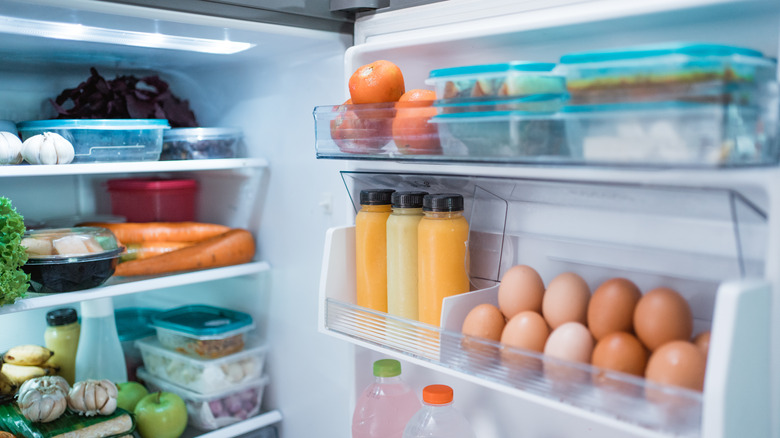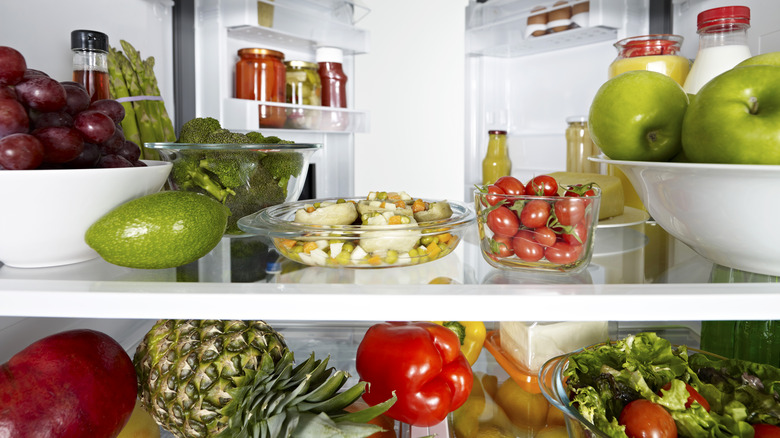The Ideal Fridge Temperature To Prevent Accidental Freezing
Does your food have a bad habit of freezing in the back of your fridge? Frozen heads of lettuce and icy cartons of milk can be rather bothersome. Fortunately, there may be a few easy fixes to this issue — which include rearranging any food that's blocking the air vents, so air can move properly throughout the entire fridge. Similarly, an understocked refrigerator can be just as problematic in much the same way that keeping your freezer too empty can ravage frozen food. This is because food actually absorbs the cool air and helps regulate the temperature.
However, if the shelves are adequately stocked but the food is still freezing, then the culprit may be a bit more obvious: Your refrigerator's temperature may have been set too low. In order to prevent your food from accidentally freezing in the refrigerator, you should aim to keep it at an ideal temperature of between 35 and 38 degrees Fahrenheit — with the sweet spot being 37 degrees Fahrenheit, per the Department of Energy.
But, before you go cranking up the temperature to thaw accidentally frozen foods, it's important to note that the U.S. Food and Drug Administration recommends keeping refrigerator temperatures at or below 40 degrees Fahrenheit. Not only will this help prevent food spoilage — and thus food waste — but it will also minimize the chances of foodborne illnesses like food poisoning, which are caused by the spread of bacteria that can fester if temperatures go above 40 degrees.
Other tips for keeping your fridge at a suitable temperature
Once you've adjusted your refrigerator's thermostat to the ideal temperature of around 37 degrees Fahrenheit, there are a few other ways you can help your fridge stay cool (just not freezing). The first of which involves a simple food storage tip: Don't put hot beverages or food, such as leftovers that are still very warm, into the fridge until they've had a chance to cool down. Placing hot foods in the refrigerator, especially in large batches, can cause the temperature to soar. As a result, bacteria can grow, and your fridge will have to work harder in order to get the temperature back down.
Another great way to maintain a proper temperature inside your fridge is to reduce the number of times you open it. Of course, if you need to get something out — definitely don't be afraid to open it. Rather, try to reduce the amount of time the door is left open, such as while you're putting groceries away or when you're staring at your stocked shelves as you ponder what to make for dinner. If you know you need multiple ingredients for a dish, grab them all in one go.
Also, be sure to check that the refrigerator's door seals aren't leaking. Ensuring the gaskets are in tip-top shape will help keep the cool air in — and it just may save you some money on your next electricity bill, too.


